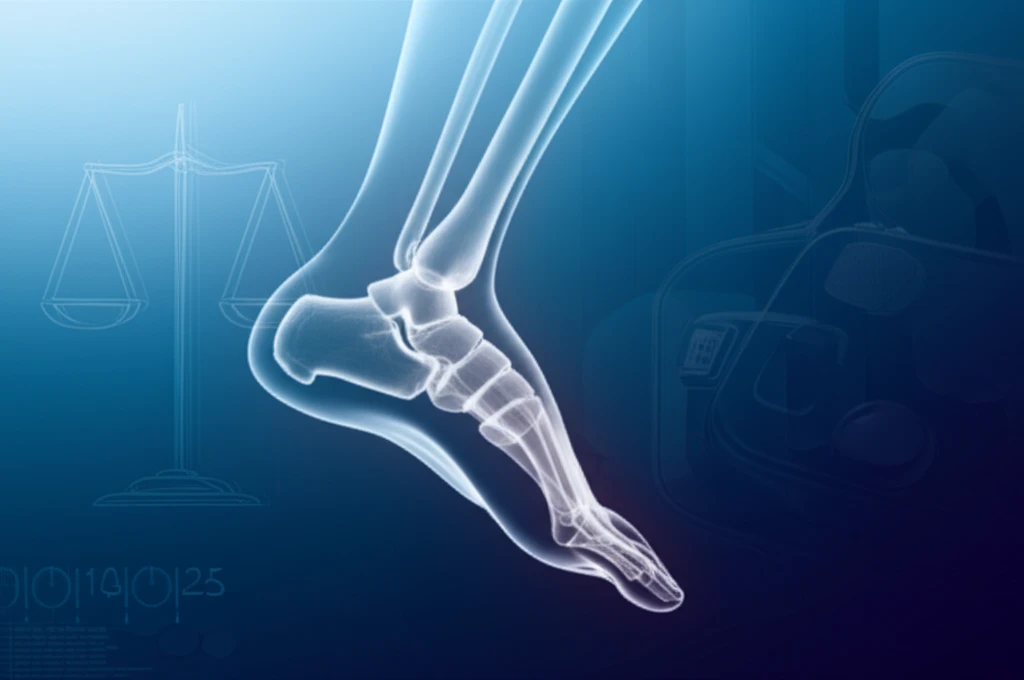
Unlocking Foot Health: How Weight-Bearing Radiographs Can Improve Your Diagnosis
"Understanding the Influence of Percentage Weight-Bearing on Foot Radiographs for Better Clinical Decisions"
Foot radiographs are a cornerstone of diagnosing and managing various foot conditions. When a patient presents with foot pain or a suspected injury, one of the first steps a healthcare provider often takes is to order weight-bearing radiographs. These images, taken while the patient is standing, provide critical information about the foot's structure and alignment under the stresses of everyday activity.
Clinical decisions, from conservative treatments to surgical interventions, heavily rely on the insights gained from these weight-bearing radiographs. However, a crucial question remains: how do different levels of weight-bearing influence the measurements and interpretations derived from these images? Understanding this influence is essential for healthcare providers to make accurate and informed decisions.
Recent research has shed light on this very topic, investigating how varying percentages of weight-bearing affect specific radiographic measurements of the foot. This article delves into the findings of this study, exploring the clinical implications and offering practical guidance for leveraging weight-bearing radiographs to enhance foot health diagnoses.
Why Percentage of Weight-Bearing Matters: Unveiling the Research

A prospective study involving twenty healthy individuals examined foot radiographs under five different weight-bearing conditions: non-weight-bearing, 10% body weight, 25% body weight, 50% body weight, and 100% body weight. Researchers meticulously measured several key radiographic parameters under each condition, including:
- 1-2 intermetatarsal angle (IMA): The angle between the long axes of the first and second metatarsals, essential for evaluating forefoot deformities.
- Talonavicular coverage angle (TNCA): The angle between the articular surfaces of the talus and navicular, indicating midfoot alignment.
- Talocalcaneal angle (TCA): Also known as Kite's angle, this measurement reflects hindfoot alignment.
- Forefoot width: Measured as the widest point of the metatarsal heads.
- Lisfranc distance: The distance between the middle cuneiform and the second metatarsal, vital for assessing midfoot stability.
- Cuboid height to ground (CHG): Perpendicular distance from the most inferior aspect of the cuboid to the horizontal supporting surface, reflecting arch height.
- Talo-first metatarsal angle (TMA): Meary's angle, formed between the long axis of the talus and the first metatarsal, indicating overall foot alignment.
Turning Insights into Action: Optimizing Your Approach to Radiographs
The key takeaway is that the amount of weight placed on the foot can influence specific radiographic measurements. This means clinicians should be mindful of a patient's weight-bearing status when interpreting radiographs. Encouraging patients to bear at least 25% of their body weight can provide a more accurate representation of foot alignment, comparable to a full weight-bearing stance. For graduated post-injury or postoperative weight-bearing regimens, understanding these thresholds can refine treatment protocols, ensuring that patients receive the most appropriate and effective care based on reliable imaging.
